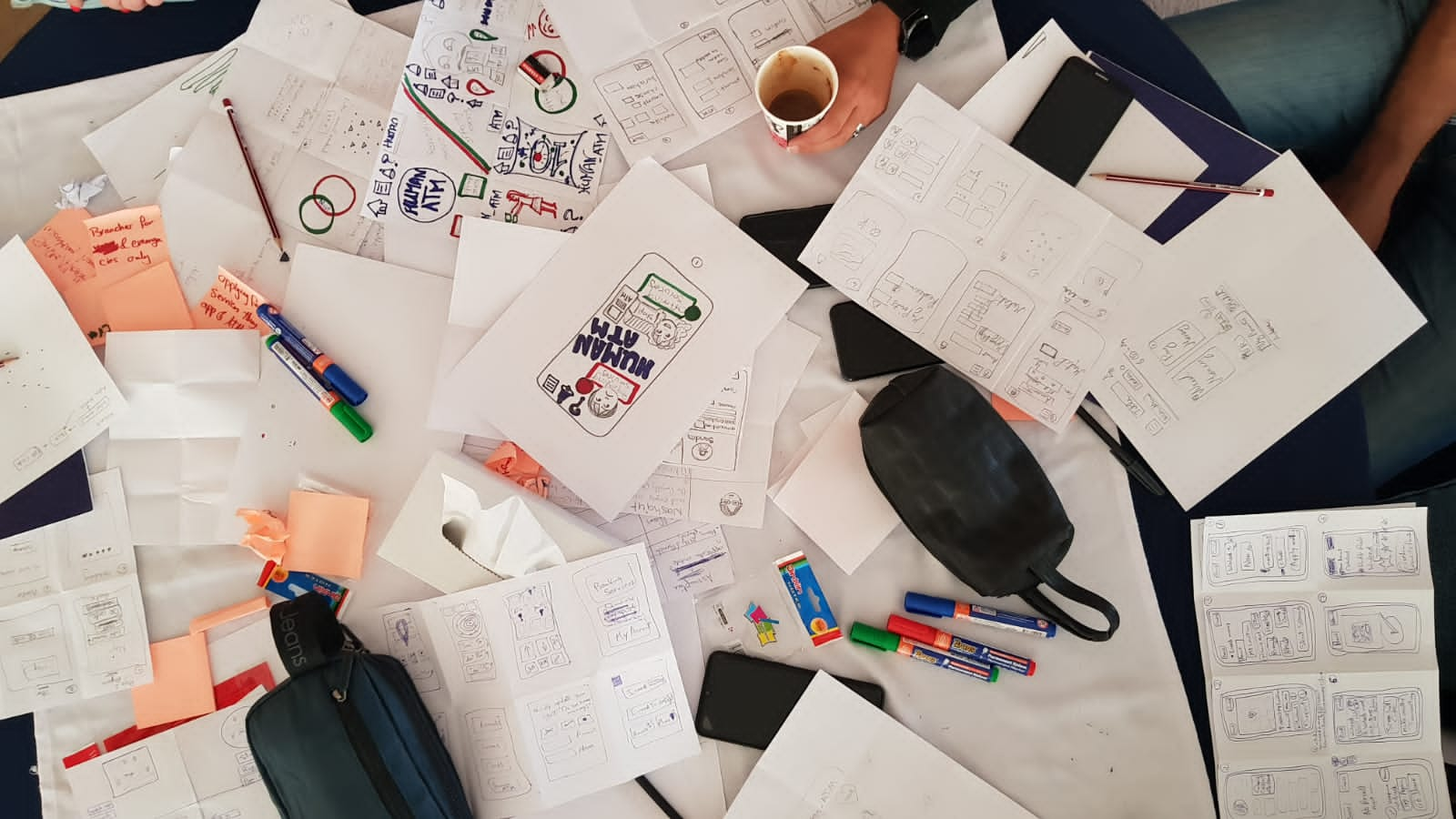UX Research Roadmap: How bold teams turn user insights into competitive advantage across every stage of product development
The $2.4 Trillion Problem Hiding in Plain Sight
Every year, companies worldwide waste $2.4 trillion on digital products that fail to meet user needs. From fintech apps that confuse instead of simplify, to enterprise software that creates more problems than it solves, the graveyard of failed products is littered with brilliant ideas that never connected with real users.
The difference between market leaders and market failures isn’t better technology, bigger budgets, or smarter teams. It’s systematic user research applied at the right moments in the product lifecycle.
Welcome to the UX Research Roadmap — a battle-tested framework that transforms user insights into business results, from the spark of an idea to the challenge of scaling to millions of users.
Why Most UX Research Strategies Fail
Before diving into the roadmap, let’s address the elephant in the room: why do so many companies claim to be “user-centric” yet still build products nobody wants?
The Random Acts of Research Syndrome
Most organizations treat UX research Roadmap like vitamins — something they know they should do, but only when they remember. Research happens sporadically, without strategic integration into product decisions. A usability test here, a survey there, but no systematic approach that builds knowledge over time.
The Result: Fragmented insights that don’t compound into actionable intelligence.
The Confirmation Bias Trap
Teams often use research to validate decisions they’ve already made, rather than to discover truths that might challenge their assumptions. This turns research from a discovery tool into a checkbox exercise.
The Hidden Cost: Missed opportunities to pivot before investing months in the wrong direction.
The Timing Disconnect
Research findings arrive too late to influence design decisions, or too early to address real implementation challenges. Without proper timing, even brilliant insights become irrelevant.
The Strategic Miss: Research that doesn’t align with development cycles becomes academic exercise rather than business driver.
The UX Research Roadmap:
A Stage-by-Stage Breakdown
The UX Research Roadmap isn’t just a process — it’s a strategic framework that ensures every product decision is informed by user truth. Here’s how each stage builds upon the last:
Stage 1: Idea Stage – Breaking Through Innovation Theater
The Challenge: Internal validation masquerading as user validation
At the Idea Stage, enthusiasm runs high and assumptions run deeper. Stakeholders love momentum: polished presentations, compelling prototypes, and unanimous agreement that “users will love this.”
Research Focus: Jobs-to-be-Done analysis and assumption validation
- Method: In-depth user interviews (15-20 per market segment)
- Key Question: What job are users really hiring your product to do?
- Success Metric: Percentage of core assumptions validated vs. refuted
Real-World Application: A Dubai-based fintech discovered through Idea Stage research that their “simplified investment platform” was solving the wrong job. Users weren’t looking for simplified investing — they were looking for trusted financial education. This insight shifted their entire product strategy and led to 340% higher user engagement.
Regional Considerations:
- Middle East: Family and religious considerations in financial decisions
- Europe: Privacy and data protection as primary concerns
- US: Speed and immediate value demonstration expectations
Stage 2: Prototype Stage – Stress Testing Before Development
The Challenge: Beautiful prototypes that break under real user behavior
Prototypes aren’t meant to impress stakeholders — they’re meant to be broken by users. This stage reveals the difference between interfaces that look intuitive and interfaces that actually are intuitive.
Research Focus: Cognitive load testing and comprehension validation
- Method: Task-based usability testing with think-aloud protocols
- Key Question: Can users complete core tasks without guidance?
- Success Metric: Task completion rate and time-to-comprehension scores
The Stress Test Framework:
- First-Click Analysis: Where do users naturally expect to start?
- Mental Model Mapping: Does the interface match user expectations?
- Error Recovery Testing: How do users handle mistakes or confusion?
- Cognitive Load Assessment: Are users overwhelmed or underwhelmed?
Stage 3: Pre-Launch Stage – First Impression Validation
The Challenge:
Products that work perfectly but fail the five-second trust test
Pre-launch testing isn’t about finding bugs — it’s about validating that users instantly understand and trust your product. This stage predicts conversion rates before you invest in acquisition.
Research Focus: Trust signals and comprehension testing
- Method: Five-second tests and first-click analysis
- Key Question: Do users understand your value proposition immediately?
- Success Metric: Trust indicators and intention-to-use scores
Critical Pre-Launch Checkpoints:
- Value Proposition Clarity: Can users explain what your product does in one sentence?
- Trust Signal Validation: What visual and textual elements build or break trust?
- Call-to-Action Effectiveness: Are primary actions obvious and compelling?
- Cultural Relevance Testing: Do design patterns align with regional expectations?
Stage 4: Live Product Stage – Turning Data Into Narratives
The Challenge: Analytics tell you what happened, but not why it happened
Your dashboard shows that 60% of users abandon at step 3. But why? This stage bridges the gap between quantitative data and qualitative understanding.
Research Focus: Behavioral analysis and friction identification
- Method: Session replay analysis and user journey interviews
- Key Question: What’s the story behind the metrics?
- Success Metric: Conversion rate improvements and friction point resolution
The Data-to-Narrative Process:
- Anomaly Detection: Where do user behaviors deviate from expected patterns?
- Hypothesis Formation: What might explain unusual user behavior?
- Qualitative Validation: Do user interviews confirm or refute your hypotheses?
- Iterative Testing: How do small changes impact user behavior?
Stage 5: Scale Stage – When Growth Breaks User Experience
The Challenge: UX that works for 10K users breaks at 100K users
Scaling isn’t just about infrastructure — it’s about user experience evolution. As your user base grows, their diversity increases, their expectations change, and new friction points emerge.
Research Focus: Segmentation analysis and experience differentiation
- Method: Behavioral cohort analysis and journey velocity mapping
- Key Question: How do different user segments experience your product differently?
- Success Metric: Segment-specific conversion rates and satisfaction scores
Scale Stage Considerations:
- Behavioral Segmentation: How do power users vs. casual users navigate your product?
- Journey Velocity: Are users completing tasks faster or slower over time?
- Cognitive Fatigue: Does interface complexity increase as features multiply?
- Cultural Adaptation: How do usage patterns differ across global markets?
The Compound Effect: How Stages Build Upon Each Other
The UX Research Roadmap’s power lies not in individual stages, but in how insights compound across the entire product lifecycle:
Stage-to-Stage Intelligence Transfer
Idea → Prototype: User jobs and pain points inform interface design decisions Prototype → Pre-Launch: Usability insights refine trust signals and first impressions Pre-Launch → Live: Comprehension testing predicts real-world conversion patterns Live → Scale: Behavioral patterns inform segmentation and personalization strategies
Continuous Learning Loops
Each stage creates a feedback loop that improves subsequent iterations:
- Assumption Libraries: Validated and refuted assumptions become institutional knowledge
- User Mental Models: Understanding how users think improves all future design decisions
- Friction Patterns: Recurring usability issues are caught earlier in future projects
- Market Intelligence: Regional insights inform expansion strategies
Implementation Strategy: Making the Roadmap Work for Your Team
Building Your Research Infrastructure
1. Research Operations Foundation
- Tool Stack: User recruitment, session recording, survey platforms, and insight repositories
- Process Documentation: Standardized research protocols for each stage
- Quality Assurance: Peer review processes for research design and analysis
2. Cross-Functional Integration
- Product Management Alignment: Research insights feed directly into product roadmaps
- Design System Integration: UX patterns become reusable components
- Engineering Collaboration: Technical constraints inform research scope and methods
3. Stakeholder Education Program
- Research Literacy: Training non-researchers to consume and act on insights
- Decision-Making Frameworks: Structured approaches for incorporating user data into business decisions
- Success Story Documentation: Internal case studies demonstrating research ROI
Measuring Roadmap Success
Traditional research metrics (number of studies, participant counts) don’t capture business impact. Instead, focus on outcome metrics that demonstrate user research ROI:
Business Impact Metrics:
- Time-to-Market Reduction: How research prevents costly late-stage changes
- Conversion Rate Improvements: Direct correlation between research insights and user behavior
- Customer Acquisition Cost Optimization: Better user understanding reduces acquisition spending
- Feature Adoption Rates: Research-informed features see higher usage rates
Organizational Maturity Metrics:
- Decision Confidence: Stakeholder confidence in product decisions
- Assumption Validation Rate: Percentage of product hypotheses tested before development
- Research Utilization: How often research insights influence product decisions
- Cross-Functional Collaboration: Integration between research, design, and engineering teams
Regional Adaptation: Scaling Across KSA, UAE, Europe, and US
The UX Research Roadmap must adapt to regional differences while maintaining methodological consistency:
Middle East Adaptations (KSA, UAE)
- Cultural Sensitivity: Research methods that respect local customs and values
- Language Considerations: Arabic interface testing and right-to-left design patterns
- Trust Building: Extended relationship-building phases in user recruitment
- Family Decision-Making: Research approaches that account for collective decision processes
European Market Considerations
- Privacy Compliance: GDPR-compliant research methods and data handling
- Market Diversity: Country-specific research rather than pan-European assumptions
- Accessibility Standards: Inclusive design testing across diverse ability levels
- Regulatory Awareness: Compliance requirements that impact user experience
US Market Dynamics
- Speed Expectations: Rapid research cycles that match fast-paced development
- Feature Complexity: Testing for higher cognitive load tolerance
- Competitive Benchmarking: Constant comparison against established market leaders
- Accessibility Requirements: ADA compliance testing and inclusive design validation
The Future of Strategic UX Research
As markets evolve and user expectations shift, the UX Research Roadmap must evolve too. Emerging trends that will shape the next generation of user research:
AI-Augmented Research
- Automated Pattern Recognition: AI tools that identify behavioral patterns in user sessions
- Predictive User Modeling: Machine learning models that predict user behavior
- Real-Time Insight Generation: Continuous research that updates as user behavior changes
Cross-Cultural Intelligence
- Global User Personas: Research approaches that account for cultural diversity from the start
- Localization Beyond Language: Deep cultural adaptation of user experiences
- Emerging Market Insights: Research methods optimized for rapidly developing digital markets
Your Roadmap Implementation Checklist
Ready to transform your product development with systematic user research? Start here:
Foundation Building (Weeks 1-4):
- Audit current research practices and identify gaps
- Build user recruitment pipeline for target markets
- Establish research tool stack and documentation systems
- Train team members on research methodology and insight utilization
Stage Implementation (Weeks 5-12):
- Implement Idea Stage research for next product initiative
- Establish prototype testing protocols and success metrics
- Create pre-launch validation checklists and trust signal frameworks
- Build live product monitoring and qualitative feedback systems
Scale and Optimization (Weeks 13-24):
- Develop behavioral segmentation frameworks for user base analysis
- Create cross-stage insight integration processes
- Establish ROI measurement and stakeholder reporting systems
- Build regional adaptation playbooks for target markets
From Roadmap to Results: The Bold Team Advantage
The UX Research Roadmap isn’t just a methodology — it’s a competitive advantage. Teams that systematically apply user research across the product lifecycle don’t just build better products; they build products that users choose, recommend, and remain loyal to.
The question isn’t whether you can afford to implement systematic user research. The question is whether you can afford not to.
Because while your competitors are playing innovation theater, you’ll be building products that users actually need, want, and love.
Ready to build your UX Research Roadmap? The framework is here. The methodology is proven. The only question left is: how bold is your team?
Transform your product development with systematic user research. Contact webkeyz to discuss how this framework can accelerate your growth.
Until next time explore webkeyz’s case studies
and Keep Thinking!








